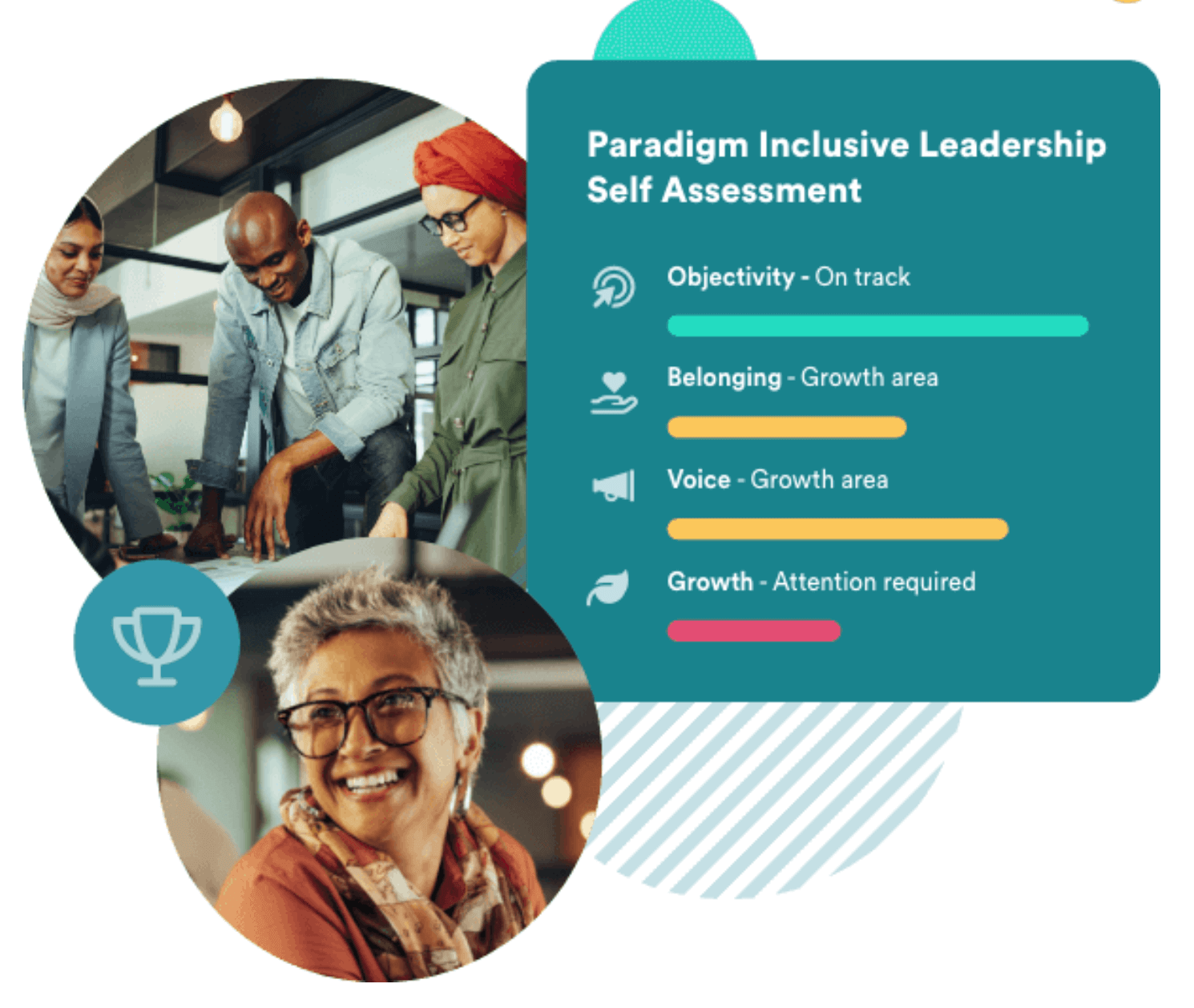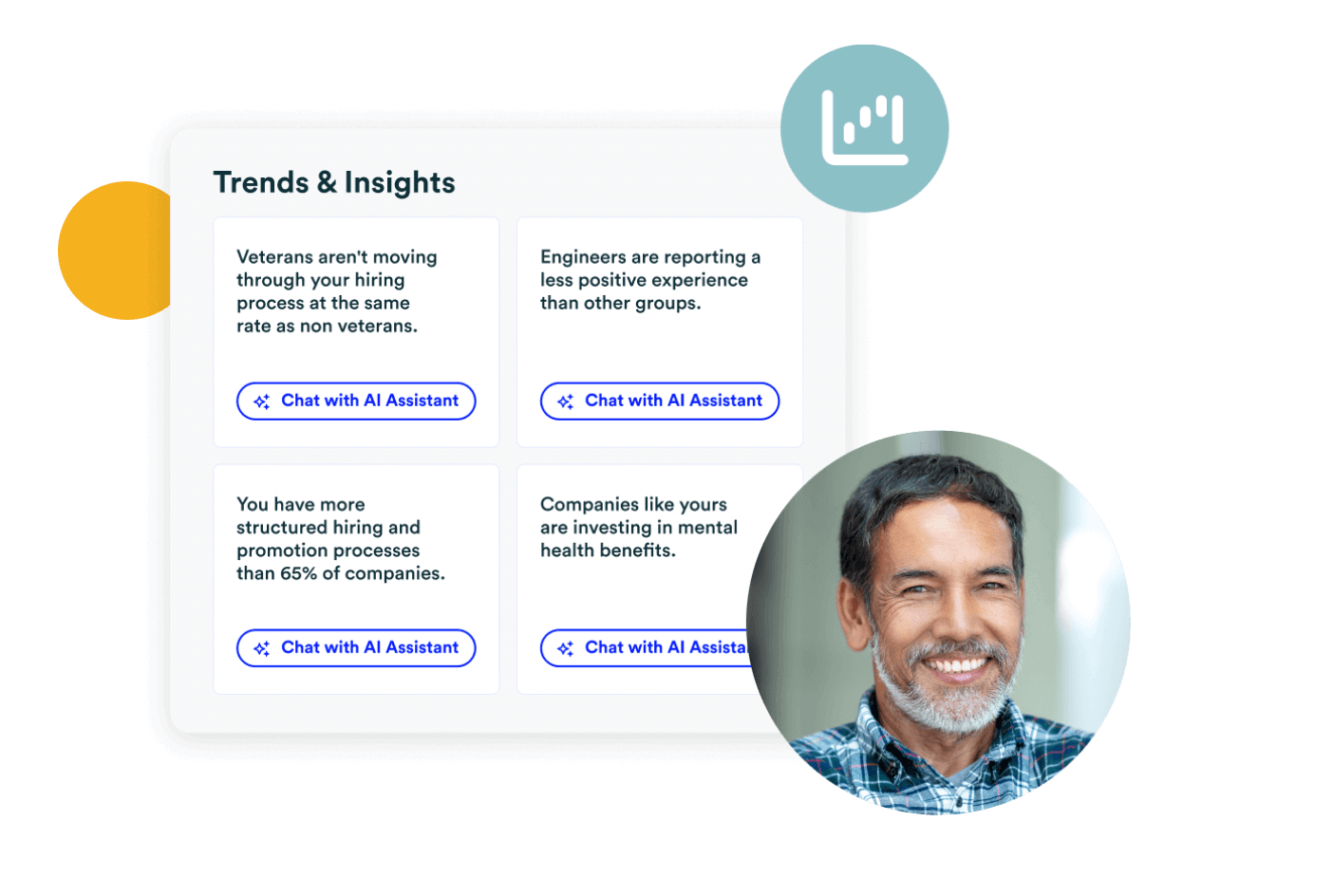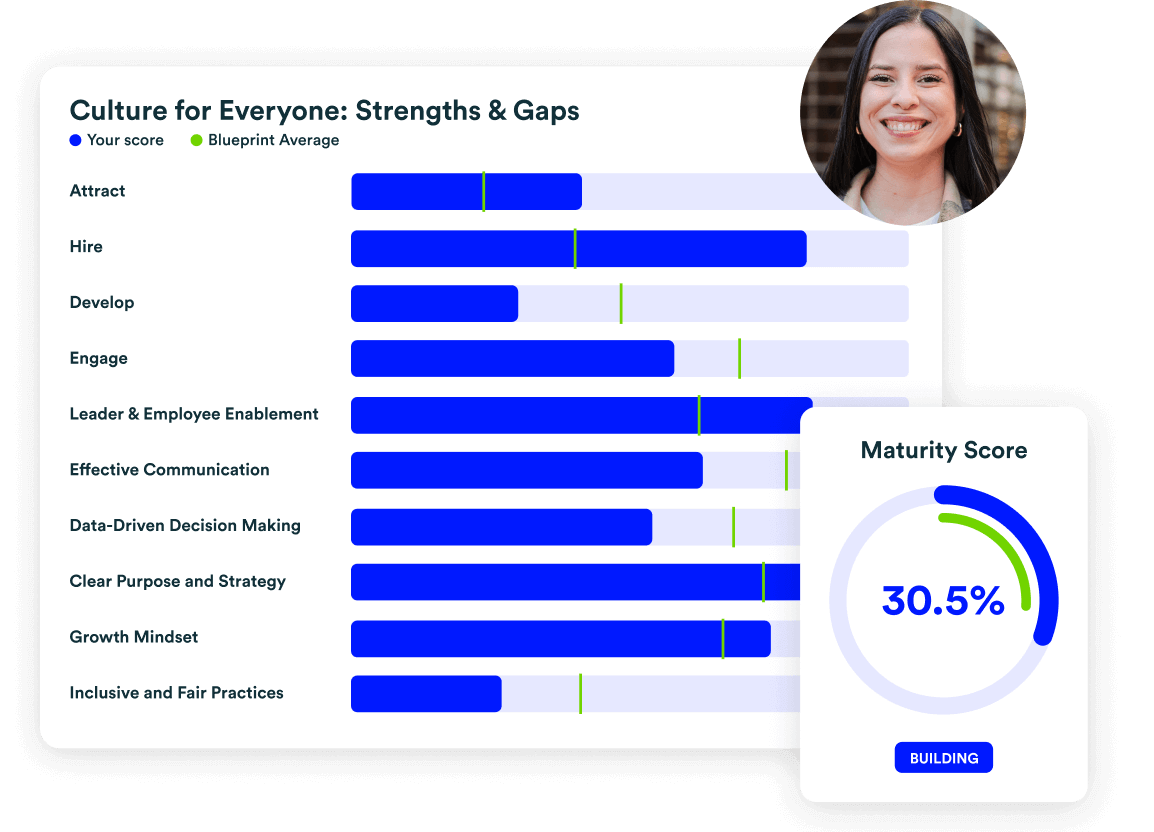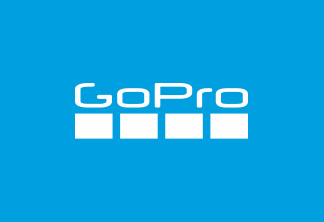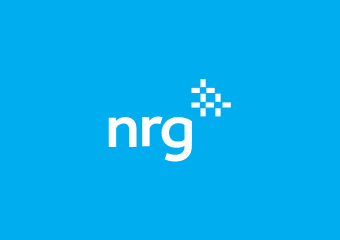Workplace culture isn’t just a nice to have. It’s a critical business imperative that helps determine how well your team performs. Yet too many leaders treat culture like a side project, relying on perks or lofty values instead of addressing the real systems and norms that shape how people work and feel every day.
As the co-founder of Paradigm, I’ve seen firsthand how intentionally built cultures help companies move beyond surface-level efforts to build environments where every employee can do their best work. The highest-performing cultures aren’t accidental, they’re intentionally designed, measured, and led.
If you’re serious about unlocking engagement, innovation, and long-term growth, start by understanding what workplace culture really is, how it drives business outcomes, and what levers you can pull to improve it.
What Is Workplace Culture?
Workplace culture, when done well, is an environment that enables people to do their best work. It’s the set of behaviors, norms, systems, and company values that shape how work gets done and how your team experiences it. You’ll see it reflected in your physical and virtual spaces, daily interactions, and organizational policies.
Think of company culture like soil in a garden: Rich, healthy culture nurtures growth, while neglected culture allows inequity, bias, and disengagement to take root. And just like soil, culture is dynamic. It can be shaped, measured, and improved over time.
Nourishing a healthy culture—one that promotes growth and enables everyone across all backgrounds and identities to thrive—requires intention and systems built around four key principles:
- Objectivity in decision-making, driven by fairness and transparency
- Belonging that fosters psychological safety and value for every identity
- Voice that ensures all contributions are heard and respected
- Growth through continuous learning and professional development opportunities
These four principles are the foundation of Paradigm’s Inclusive Leadership and Inclusive Culture frameworks. Data has consistently shown that embracing these tenets leads to higher performance, better engagement, and stronger decision-making.
Why Culture Is One of Your Most Powerful Business Levers
Culture isn’t just about how your team feels, it’s about how your business performs.
Research shows that inclusive, high-performing cultures drive measurable business outcomes. According to Harvard Business Review, a strong sense of belonging leads to a 56% increase in job performance, a 50% drop in turnover risk, and 75% fewer sick days. For a 10,000-person company, that translates to $52 million in annual savings.
These kinds of benefits underscore why positive company culture isn’t just a side project—it’s something you must build into daily activities, policies, and behaviors.
Culture is one of your most underleveraged performance systems, and it holds the power to accelerate growth across your organization. When culture is aligned with company goals and grounded in equity and inclusion, you unlock up to 16.5% higher performance, plus:
- Greater employee engagement and productivity
- Stronger innovation and collaboration
- Better talent attraction and retention
So why do unhealthy cultures persist? Paradigm’s work with organizations reveals three common causes:
- Culture isn’t clearly defined. Vague values and aspirational mission statements don’t guide behavior.
- It isn’t measured consistently. Without data, leaders can’t see what’s working or what needs to change.
- Systems and practices don’t align. Daily workflows, people processes, and leadership behaviors often contradict stated values.
Building a high-performing culture starts with acknowledging that culture already exists—whether it’s helping or hurting your business. Leaders must take ownership of it, evaluate it, and intentionally shape it to create meaningful outcomes.
4 Common Culture Gaps and How to Close Them
Once you begin measuring culture with intention, patterns emerge. Often, the challenge isn’t a lack of values but a misalignment between what companies say they value and what people experience day to day.
Insights from surveys, leadership assessments, and organizational data reveal four common gaps that hold teams back. Each one reflects a disconnect between intention and impact—and an opportunity to build a more inclusive, high-performance culture.
1. Misaligned Values
Trust erodes when stated company values aren’t reflected in how decisions are made or people are treated. For example, a company might claim to “prioritize employee well-being” while employees don’t have the flexibility they need to take care of their physical and mental health.
These misalignments often show up through measurable signals you can address with targeted solutions:
Measurable signals:
- Employee trust scores are low, or policies are applied inconsistently.
- Employees are unaware of or skeptical about core values.
How to close the gap:
- Revisit and clarify your values. Define what they look like in daily practice.
- Use Paradigm’s culture assessments to identify where values aren’t translating into experience.
- Establish clear metrics tied to your core values and measure progress regularly.
2. Leaders Who Don’t Model the Culture
Even the best-designed culture will falter without a leadership team that models it. Your managers and execs set the tone for inclusion, risk-taking, and growth. If they’re not equipped or held accountable, culture change stalls.
When leaders fall short, it shows up in the employee experience. Here’s what to look for and how to course-correct:
Measurable signals:
- Engagement, performance, or belonging scores vary widely across teams.
- Culture initiatives lack clear ownership or follow-through from leadership.
How to close the gap:
- Use Paradigm’s Inclusive Leadership Assessment to identify where leaders are strong and where they need support.
- Provide training, coaching, and frameworks that help leaders create a healthy workplace culture, starting with Objectivity, Belonging, Voice, and Growth.
- Instill accountability by tying leadership metrics to inclusive behaviors and outcomes.
3. Inconsistent or Unfair People Systems
Employees notice when performance reviews, promotions, or recognition programs feel subjective. If people believe the system isn’t fair, they’re less likely to contribute, share ideas, take risks, or invest fully in their roles.
These gaps often stem from a lack of structure and transparency. You can diagnose and fix them by paying attention to key data points:
Measurable signals:
- Hiring, promotion, and compensation data reveal gaps across identity groups.
- Employees are unclear on how people decisions are made or whether they’re applied consistently.
How to close the gap:
- Standardize people processes like hiring new employees and promoting top talent using structured rubrics and clear criteria.
- Examine decision points, like promotions or raises, for signs of bias or inconsistency.
- Train managers on inclusive decision-making and feedback delivery.
4. Belonging Breakdowns Across Identity Groups
Belonging is foundational to performance. When employees from certain groups don’t feel valued or included, engagement and innovation suffer.
Belonging gaps are often revealed through data and reinforced by experience. To identify and address them, look for:
Measurable signals:
- Belonging gaps show up in survey data, especially when segmented by identity.
- Employees report exclusion, tokenism, or lack of voice in decision-making.
How to close the gap:
- Prioritize representation and inclusion in leadership and team structures.
- Use tools like Paradigm’s Inclusion Survey to pinpoint where belonging breaks down.
- Invest in systems that support peer connection and visibility, such as ERGs, mentorship programs, and sponsorship opportunities.
When you close these common gaps, you don’t just fix problems. You create momentum toward a positive work culture where everyone can thrive. But identifying these gaps isn’t guesswork. It requires a structured, intentional approach to understanding how culture shows up across your organization.
How to Evaluate Your Current Workplace Culture and Close the Gaps
If culture is a key to performance, the next question is: How do you actually understand it? That’s where many companies stumble—not because they don’t care, but because they don’t know how to measure what matters. If you can’t measure it, you can’t change it.
A single pulse survey isn’t enough. Culture lives in your organization’s systems, behaviors, and daily experiences. That’s why effective culture assessment requires qualitative and quantitative data as well as an intentional lens on inclusion, equity, and performance.
Here’s how leading organizations assess and understand culture:
They Understand Team Dynamics
Some of the biggest impacts on your culture stem from how people work and interact day-to-day:
- Who speaks up in meetings—and who tends to stay silent?
- How consistently do managers offer clear, constructive feedback?
- Is recognition distributed fairly across teams and individuals?
- Do team members feel psychologically safe taking risks or proposing bold ideas?
Psychological safety is key. When leaders model vulnerability, acknowledge mistakes, and share progress openly, employees are more likely to contribute ideas, surface challenges, and participate in culture change.
The questions you ask can uncover how employees experience your current workplace norms. If those norms aren’t consistent across your organization, it’s critical to establish structured processes that ensure fairness and give every employee an equal opportunity to succeed.
Once these structures are in place, equipping managers and employees with training and resources helps create consistency and lays the foundation for a culture where everyone can thrive and contribute their best work.
They Use Data-Driven, Inclusion-Centered Assessments
Culture surveys need to go beyond surface-level job satisfaction scores. Understanding how culture really shows up in your organization means using tools that measure inclusion, equity, and psychological safety—especially across different demographic groups.
Paradigm’s Inclusion Survey focuses on the specific dimensions that shape an inclusive, high-performance workplace:
- Belonging: Do employees feel seen, safe, and valued for their full identities?
- Fairness: Are systems in place to ensure decisions are made transparently and objectively?
- Growth: Do team members have the support and encouragement to develop new skills and take risks?
- Voice: Is there space for every employee to contribute ideas and feel truly heard?
- Purpose: Does the work feel meaningful, and do employees understand their impact?
These insights reveal not just how people feel, but why they feel that way and what needs to change.
Equally important is assessing how leaders influence culture. Paradigm’s Inclusive Leadership Assessment helps organizations measure how well leaders model inclusive behaviors across the four pillars of a positive workplace culture:
- Objectivity: Are leaders making decisions based on consistent, fair criteria?
- Belonging: Do they create a positive work environment where people feel respected and connected?
- Voice: Are diverse viewpoints regularly invited and truly considered?
- Growth: Do leaders provide coaching and development opportunities for all team members?
Unlike traditional assessments, this one focuses on behaviors, not perceptions, giving leaders clear, actionable feedback on what they’re doing well and where they can improve.
Listening sessions and focus groups surface unwritten norms, like the pressure to respond to messages after hours or subtle biases in who gets heard. Paradigm’s focus group facilitation and leadership assessments help organizations uncover these cultural undercurrents and translate them into actionable improvement strategies.
Together, Paradigm’s survey, focus group facilitation, and leadership assessment create a 360-degree view of your culture: what employees experience and how leaders shape that experience. This combined insight is essential for identifying the biggest opportunities for change.
They Analyze Multiple Data Sources
No single data point tells the full story. Culture becomes visible when you layer data from hiring, promotions, pay equity, engagement, and performance—and examine trends by demographic group.
For example, if overall engagement looks strong but LGBTQ+ employees are leaving at higher rates, you have a culture gap. If women are promoted less frequently, there’s a structural issue in your people systems.
Ask yourself: “Who is this positive experience not true for today?” That’s where culture transformation begins.
Identifying and closing those gaps moves you toward an organizational culture where everyone can perform to their full potential regardless of their background.
How to Rebuild a Culture That Enables Performance
Transforming culture isn’t about starting over. It’s about working with what you have and redesigning it with intention. While creating culture from scratch may seem simpler, some of the most meaningful progress can come from organizations willing to diagnose what’s not working and make bold, data-driven changes.
Here’s how to turn insight into action and build a strong culture where everyone can perform at their best:
Step 1: Secure Leadership Buy-In
When leaders are on board, culture change gains traction. But getting real buy-in takes more than an all-hands announcement or a task force.
Start by building the business case. Share internal data that highlights culture gaps, and connect those gaps to outcomes that matter, like retention, engagement, innovation, and growth. Use research like Paradigm’s Benefits of Belonging report to show what inclusive cultures unlock.
Then position leaders as co-owners of the change. Invite their input early, clarify their role in shaping the culture, and equip them with support like Paradigm’s leadership development programs and Inclusive Leadership Assessment. When leaders model Objectivity, Belonging, Voice, and Growth, the rest of the organization follows.
Step 2: Set Measurable Culture Goals
Good intentions won’t move the needle without clear goals. To build accountability into your company-wide culture work, set SMART goals that are specific, measurable, attainable, relevant, and time-bound.
For example, you might set a goal to close gaps in performance feedback quality between majority and underrepresented employee groups within the next year, ensuring all employees receive equally actionable, growth-oriented feedback.
Paradigm’s Culture for Everyone platform supports this process by identifying your biggest opportunities, surfacing targeted recommendations, and tracking your organization’s culture maturity over time.
Step 3: Build Feedback Loops and Trust Across the Organization
Culture isn’t static, and your strategy shouldn’t be either. Sustained transformation requires a workplace where feedback flows openly across levels, and people feel safe speaking up, listening, and acting on what they hear.
That starts with intentional employee feedback loops. Use systems that don’t just collect input but analyze it by leveraging tools like surveys, listening sessions, and Paradigm’s AI-powered data analysis to surface patterns and identify where experiences differ across groups. Encourage leaders to share what they’re hearing, how they’re responding, and where they’re still learning. This level of transparency builds trust and signals that open communication isn’t just encouraged—it’s valued and acted upon.
At its best, a strong feedback culture isn’t just reactive, it’s a driver of innovation, inclusion, and ongoing performance improvement.
Your Culture Is Already at Work—Now Make It Work for Everyone
Culture is always active. Whether intentionally designed or left to chance, it influences how your people perform, connect, and decide to stay or leave. The question isn’t if your culture matters—it’s whether you’re building a culture that works for everyone.
Paradigm has helped hundreds of organizations move from cultural aspiration to measurable impact. The journey begins with defining what you want your culture to be, measuring what it actually is, and empowering your leaders to model the behaviors that make it better.
With the right tools, systems, and support, you can build a culture where everyone has the opportunity to thrive.
Ready to get started? Let’s work together to make it happen.

 Our website uses cookies to distinguish you from other users of our website. This helps us to provide you with a good experience when you browse our website and also allows us to
improve our site. By continuing to browse our website, you’re agreeing to our use of cookies. For more information, please read our
Our website uses cookies to distinguish you from other users of our website. This helps us to provide you with a good experience when you browse our website and also allows us to
improve our site. By continuing to browse our website, you’re agreeing to our use of cookies. For more information, please read our


